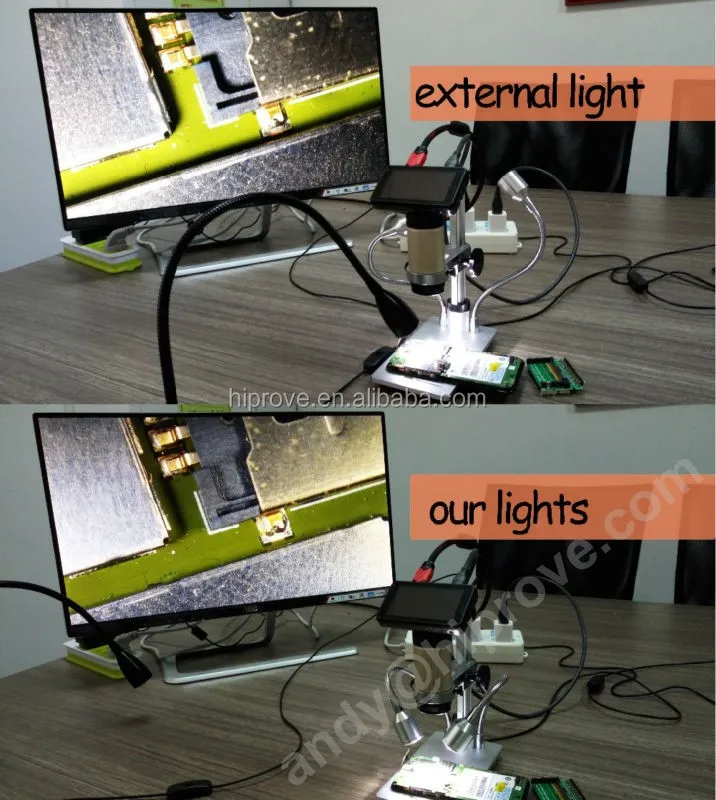
When it comes to the ability to display details, the difference isn't that great, but the image from the AD407 is clearly sharper.Ĭoncerning the video output via HDMI, the older one clearly has to concede superiority to its successor, both in terms of resolution and frame rate. To make the choice even more difficult: the old one has a digital zoom up to 4x, while the new one doesn't get any further than 3x.

Apparently extra pixels are added, where you would expect that the image quality of the new Andonstar is better than that of the older one. According to the manufacturer, the AD407 has a 4-megapixel sensor, while the ADSM302 doesn't get any further than 3 megapixels.īoth microscopes offer, according to the specifications, a photographic resolution of 12 megapixels (4032 x 3024), and these values also show up when you open the photos (JPEG files) on a PC. When it comes to the image quality, the already limited documentation from Andonstar is somewhat vague. The Andonstar AD407 (right) next to its (slightly) smaller sibling. While in most cases it was reasonably comfortable to work with the 5” screen of the older model, in our lab we nevertheless connected an external 10” monitor via HDMI for the more detailed fine work.įigure 1. The screen diagonal for the LCD of the new model is more than 5 cm (2") bigger, which is an enormous improvement. When you put the two microscopes side-by-side ( Figure 1), the difference in screen size is immediately obvious. Regarding the implementation and price, this new microscope is closest to its predecessor, the ADSM302, and for this reason the characteristics and specifications of the AD407 are compared to this model and the other models are not considered here. What changes has the manufacturer made that justifies the existence of number five? There are already four different models in the Elektor Store, and there is now the next version: the Andonstar AD407. With every new addition to the Andonstar family that has progressively become available, a few things were changed, added and improved – you would expect that by now a point has been reached at which a new model is little more than ‘more of the same’. Quite quickly this manufacturer followed up with models that had a built-in LCD, which removed the necessity (partially) of a connection to a computer: an enormous improvement.
#Andonstar adsm201 manual Pc
And also, about the instructions, we only have the electronic edition (like the followed picture shows), if you need one, after you bought this item, you can send massage to us, and we will send you in private.For me, the first time I saw one that started to look like it could actually be useful, was when the Andonstar A1 arrived on my work bench: finally an affordable and reasonably stable microscope that you could connect to a PC via USB, so that you could manipulate and inspect your circuit boards and soldering workmanship. If you only want to buy a USB microscope, our store has other devices.

Features 1.Ample working distance: 4cm - 15cm 2.Reasonable depth of field: no matter how complicated the structure of object is, our microscope just makes it clear 3.Exclusive lens: reduce veiling glare and prevent from harm of smudging which produced in the process of soldering 4.Real time imagery, no smear 5.300 times magnification, 1920*1080P, 30fps and high quality non-interpolate Large CMOS sensor 6.Digital zoom,4 7.Metal stand, sturdy and durable, demonstrates quality 8.Bring dual lights own, reduce inverted image Packaging included Digital Microscope Camera X 1 Metal base Stand X 1 HDMI cable x1 USB cable X 1 DC adapter X 1 We can't guarantee that this device can be used with all PC, so, the USB output model is just an option.


 0 kommentar(er)
0 kommentar(er)
